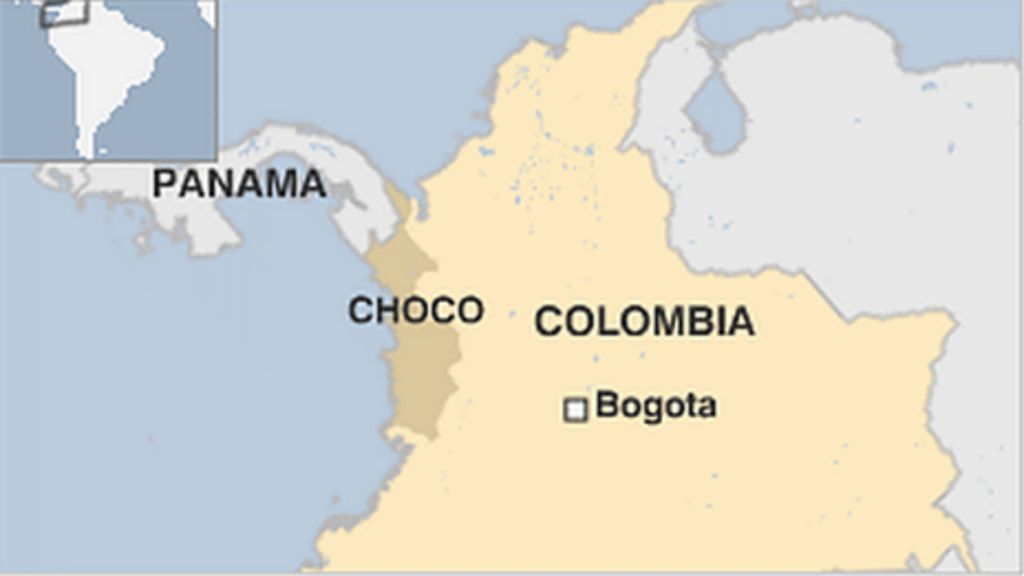RIO DE JANEIRO, BRAZIL – A shootout last Sunday left several gunshot wounds in the intensive care ward of the main hospital in Quibdó, a Colombian city plagued by violence imposed by the ELN guerrillas, the Gulf Clan, and the local narco group “Fuerzas Armadas Mexicanas” (Mexican Armed Forces).
Men with long-range weapons crossed the San Francisco de Asis hospital to reach the dock of the mighty Atrato river where a boat was waiting for them, facilitating their escape from another gang following them from the neighboring sector.

In the chase, some projectiles hit the windows of the recently equipped unit for critical patients in which coronavirus patients receive care.
The confrontation reflects the deterioration of public order that has jaded the approximately 120,000 inhabitants of the capital of Chocó, a department bordering Panama.
Violence in Quibdó, one of the most dangerous capitals of the country, is not new. Still, its inhabitants report that they have never felt so much fear and anxiety as the one that now forces them to lock themselves in their homes, avoid passing through some areas and flee to other departments.
Because of the murders, threats, extortion, and attacks in recent weeks against civilians, merchants, and police, the city is preparing peaceful demonstrations to denounce the inability of the authorities to control a war in which youths and minors almost always fire weapons.
“In the case of Quibdó we have a situation that for several years has been alarming due to the issue of homicide, the presence of criminal structures (gangs) in the urban area and the impact on young people,” explained Irina Cuesta, a researcher of conflict dynamics at the Ideas for Peace Foundation (FIP).
YOUNG PEOPLE, VICTIMS, AND PERPETRATORS
Chocó, a region impoverished by local corruption and state neglect, is disputed by illegal armed groups due to its privileged geographical location with coasts on the Pacific Ocean and the Caribbean Sea.
Its inhabitants learned decades ago to live in fear because the dispute between guerrillas, paramilitaries, and drug trafficking, and illegal mining gangs has turned this area into a crossfire field.
The minors, who survive without better educational opportunities and precarious access to basic services, are recruited by criminal actors who train them to extort money, steal and murder in broad daylight.
Horror, they denounce in the city, is entrenched in every neighborhood. In some cases, gangs impose their law with bullets, decree curfews, and decide who enters and leaves.
Last year, despite mobility restrictions due to the coronavirus pandemic, there were at least 150 murders in Quibdó, almost triple the 55 recorded in 2010, according to the National Police Statistical Information System.
According to official data, more than 50% of the victims of these murders were under 30 years of age. Some crimes occurred due to confrontations between groups, revenge, and settling of scores, as reported in many cases by the local press.
LIVING IN THE MIDST OF BULLETS
Also at risk are ethnic leaders and authorities threatened through pamphlets and victims of attacks such as the one suffered last weekend by a well-known teacher in the city, who survived despite being shot several times in the head.
However, the capture of those responsible for the crimes has not been enough in the city with the highest monetary poverty rate in the country.
Death threats frequently circulate in Quibdó, signed by groups such as the “Mexican Armed Forces” or “Los Mexicanos,” a dangerous and feared gang whose members continue to control the city even from prison.

“Los Mexicanos,” who authorities say are not related to groups from the country from which they took their name, are youths from some of the city’s peripheral neighborhoods who are battling to the death with the Clan del Golfo, the country’s largest criminal gang, and other common crime networks for control of micro-trafficking.
In October last year, Colombian President Ivan Duque traveled to Choco and announced that his government would increase its footprint in the region, offered million-dollar rewards for gang leaders, and unveiled an ambitious plan against extortion.
But the military response has not solved the city’s insecurity problems either because “what we see is that there is a significant lag in terms of territorial development and security guarantees for ethnic communities,” explains Cuesta.
The clashes between the security forces and illegal armed groups also affect communities that are caught in the middle of the fire, as happened with patients and workers at the Quibdó hospital, she adds.
People also fear that the recent threat of paramilitaries who promised to send armed men to “start killing Mexicans” and “clean up the city” will become a reality because it would increase violence.
According to regional leaders, the violence is also related to the lack of opportunities for hundreds of young Afro-Colombians who arrived in Quibdó displaced with their families from other parts of Chocó.
“We are talking about populations that have been victims of the conflict and also re-victimized in their processes of attention and reparation,” says Cuesta and warns that in the area the response of the authorities is limited, “which generates a vicious circle in which the communities perceive that nothing changes”.
Source: efe/dw/brb

